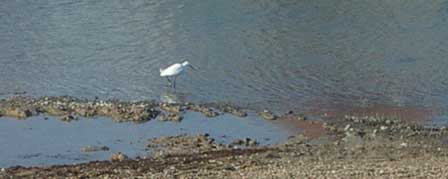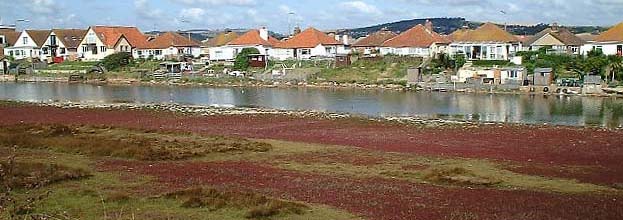 |
|
|
 |
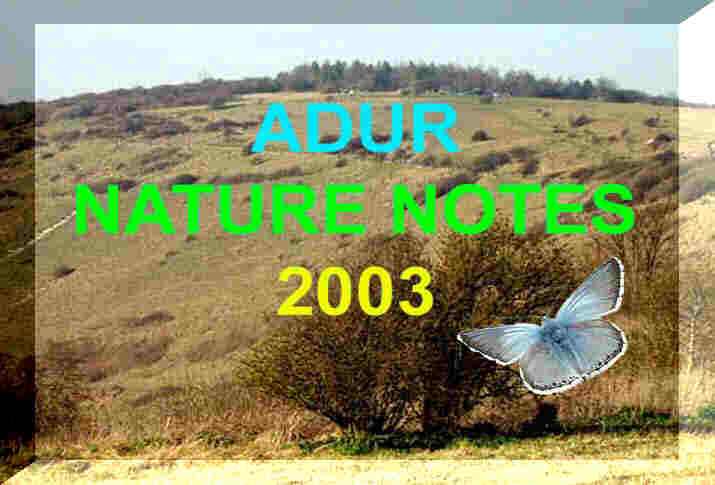 |
|
|
|
(Community Group) |
 |
| Coastal Fringe |
| Chalk Downs |
| Intertidal (Seashore) |
| River Adur Estuary |
| River Adur Flood Plain |
| Sea (off Sussex) |
| Town & Gardens |
| Widewater Lagoon |
 |
| Saline Lagoon Links |
| Brooklands Boating Lake |
|
|
Widewater
Widewater is a landlocked brackish lagoon approximately 1200 metres long and 50 metres at its widest point when the lagoon is in flood. It was created by Man from the original Adur estuary after been landlocked by longshore drift and violent storms. The waters are replenished by the sea, which filters up through the basin of the lagoon on very high tides, and also by rain water. There is a dramatic rise in the level after heavy rainfall, more than can be explained by the rain landing directly on the lagoon flood plain. Man has built up banks on the perimeter of the lagoon to prevent flooding to this nearby reclaimed land, now turned to residential use. The quantity of water contained within the lagoon and salinity are liable to fluctuate wildly. The flood plain covers an area of 18.5 acres.
by Steve BarkerSince May 2013 a pipeline has been installed to supplement the water levels in Widewater during the summer when the water levels would previously fall to a very low level.
This area can be reached
from Shoreham-by-Sea railway station
following the purple route on the Map.
Click on the underlined text.
World
of Widewater
(Community
Group)
| Chairman | ||||
| Secretary | Jo Procter | Tel:
01903 752505 |
190a
Brighton Road
Lancing BN15 8LL |
EMail:
joproctor@hotmail.com |
| Treasurer |
- Underwater
Critters
3-spined
Sticklebacks, Gasterosteus
aculeatus.
Link
to web page.
Hoglice Idotea chelipes (=I. viridis).
Photograph
by Andy Horton
One species of this large woodlice-type crustacean has been identified from the lagoon. It is an inhabitant of non-tidal lagoons and can tolerate full salinity to almost fresh water down to 0.4%. It will also inhabit the pools that are cut off from the main body of the lagoon during the summer.
Bilge Bug (or Sea Slater) Ligia oceanica
 Photograph by Steve Barker
Photograph by Steve Barker
The largest of the British wood lice feeds on decaying vegetation at the margins of the lagoon.
SEA
SLATERS
http://www.acs.ucalgary.ca/~sakurai/whyligia.html
Lagoon Cockle Cerastoderma glaucum
Lagoon Cockle and Glasswort
A recent survey (1997) has rediscovered this cockle which resembles the Common Cockle, Cerastoderma edule, but has a much thinner shell and is only to be found in brackish water.
Lagoon Cockles have byssus threads and I found juveniles often attached to seaweeds and other substrates. I never noticed byssus threads in Common Cockles. Grown Lagoon Cockles may bury themselves as well, but never so deep as Common Cockles.
Some notes on the Lagoon Cockle
Sea
Anemone Edwardsia
ivelli
A recent survey (1997) failed
to discover this sea anemone and it has now been pronounced extinct. It
was last recorded in 1983.
The
1997 survey by Robert Irving
took 8.5 cm diameter cores from various positions (about 10 in all) throughout
the lagoon, marked on the site map in the Report. Cores were to a depth
of approx. 8 cm, but also surface scrapes into polythene bags under water,
probably the top 5 cm or so.
A
search will be undertaken next summer. See
notes.
This
sea anemone is protected under Schedule 5 of the Countryside
and Wildlife Act 1981, but a proposal has been penned to remove it.
JNCC
Proposal to remove Edwardsia ivelli from Schedule 5 protection (Link)
The grid ref for the collected
specimens was TQ 202 043.
As
the anemone may still be extant, the proposal to remove the sea anemone
from the list has now been removed.
Countryside
and Rights of Way Act 2000
UK Biodiversity Edwardsia ivelli
There is a possibility that the above sea anemone was a deformed specimen of Haliplanella lineata (my surmise AH). This latter typical brackish water sea anemone has been discovered and identified in July 2002.
Hydrozoan
Thieliana
navis (=Clavopsella
navis)
A
rarely recorded brackish water hydrozoan is found in brackish water down
to a salinity of 0.8% and its only habitat of note in the United Kingdom
is the Widewater Lagoon, where it is found attached to the seaweed Chaetomorpha
linum and Ulva. This hydrozoan does not have a medusa stage.
It grow to a length of 30 mm. This species has been discovered in the Kiel
Canal and probably occurs in the Baltic Sea, a traditional and current
trading area with Shoreham Harbour. It is possibly
an alien species
introduced a long time ago, although Widewater has been cut off from a
direct link to the sea for over a century. The numbers of this hydroid
may be reduced by the 3-spined Sticklebacks.
The
1997 survey failed to discover this hydroid.
The
species was added to Schedule 5 of the Wildlife and Countryside Act 1981
in 1998, after being penned for inclusion in August 1996 (included in Torpedo
Issue 5).
More
Information and Protection Status
The
origin of this hydrozoan is apparently unknown and the only recent records
come from Widewater Lagoon and several localities in the SW Netherlands.
In the past is has been recorded from ship's hulls in Cape Town (South
Africa) and from one locality in the Baltic near Kiel (Germany).
Its
present name is Thieliana navis. It seems to prefer a salinity of
about 20 ppt. It grows on boulders, invertebrates, algae and plants. In
the Netherlands and GB it occurs in enclosed man-made water bodies of relatively
recent (last century) origin.
Black-spot parasite Cryptocotyle
lingua
There do not appear
to be any large winkle-sized gastropods
living in Widewater. This is interesting as it appears as one of the
stages in the life cycle of the flatworm Cryptocotyle
lingua.
Chaetomorpha
linum
Cladophora
dalmatica
Enteromorpha
flexuosa
Ulva
lactuca
Ulva
rigida
Rhizoclonium
tortuosum
(Information
supplied by Robert Irving)
Green Tufted Seaweed
The algae in the lagoon includes the annual Cladophora illustrated above. The Sticklebacks make their nest amongst it in the spring. By late summer, it breaks free and forms a mat on the surface of the remaining water.
Flowering Plants
Glasswort, Salicornia, grows on the margins of the lagoon where patches turn red in autumn. There are several species but this plant is so variable in appearance that it will need experts to distinguish them to species level.
Sea Blite and Glasswort in the western lagoon (September 2003)
Glasswort
showing the varying appearances of the plant (September 2001)
The
plant on the far right is the young shoots of Sea Blite, Suaeda
maritima.
Click
on the image for a large view.
Glasswort:
Query, still under investigation (Link)
Frequently, but by no means always, the species that turn red are referred to as Salicornia ramosissima. (Tony Davy)
Sea
Heath, Frankenia
laevis, was recognised in 2000, in a area that had previously been
fenced off to the public to protect the breeding area of the Ringed Plover.
A large patch of this plant was discovered. This plant is very rare in
Sussex known only from Rye Harbour, but it has possibly been missed on
the fringes of salt-marshes.
This
plant has now been found be a genuine wild specimen and NOT a garden escape.
It was already listed in Betty Bishop's, Flora of Shoreham-by-Sea (1984).
Image
(Link to) Widewater Page (by Ray Hamblett) including a photograph of the Sea Heath
 Floating
on the surface the strands of the rooted plant with the scientific name
of Ruppia maritima
were pointed out. This is an unattractive choking style green flowering
point that was present in large clumps.
Floating
on the surface the strands of the rooted plant with the scientific name
of Ruppia maritima
were pointed out. This is an unattractive choking style green flowering
point that was present in large clumps.
- Meetings
3 February
2002
A
naturalists meeting at Widewater Lagoon (meet at the Information Booth)
with Professor Richard Ivell and an attempt to discover the sea anemone
Edwardsia
ivelli.
See
the notes below.
JNCC
Proposal to remove Edwardsia ivelli from Schedule 5 protection (Link)
24
January 2002
A
Public Meeting was held at Lancing Parish Hall to discuss with the Environment
Agency the effect shingle movement is having on water levels in Widewater
Lagoon. There are presentations by Rupert Chubb (Flood defence Manager,
Environment Agency), Derek Neate (Friends of Widewater Lagoon) and Councillor
Tony Nicklen.
Glasswort
Page
8
May 2001
There
was a meeting between the Environmental Agency, with contractors, Halcrow,
and the Friends of Widewater Lagoon over the sea defences planned for the
shingle between the lagoon and the sea, and the ecological impact on Widewater.
The transcript is on the following site (click on the text):
| News
12
May 2003
The photograph on the left shows what looks like mainly coloured water coming out the pipeline which is discolouring the sea, but a lesser extent than the water discharges from Shoreham harbour on to Southwick beach. 8
January 2003
The best bit of Ringed
Plover nesting habitat and the most attractive bit of the flora (Sea
Thrift and Stonecrops) of the lagoon fringes
has been churned to pieces. The location of the pipeline was changed at
the last minute. The top soil/gravel is meant to be returned in the place
from where it was removed.
The new rock defences on the shingle beach are erected on Widewater beach with rocks* brought in by barge across the North Sea from Norway. Five great heaps of rock looking like small volcanic islands sat on the beach the last time I looked. Each waiting to be sculpted into a new groyne structure. I stood watching the contractors as they were using a mechanical claw to set rocks into place in a mound that will become one of the new groynes.
It was extraordinary to see how much effort went in to get one piece of rock to fit exactly the right position at the top of the newly formed mound. Imagine having to build a rockery with pieces that weigh several tonnes each. All the exposed pieces, it seems, must be secure and form an overall smooth appearance, so that if you take a line and hold it against the mound, no individual rocks break the line or leave a large hollow. Or perhaps imagine if it were rendered with cement, a rock would not protrude through. That seems to be the degree to which construction was taken. One piece of stone was tried, rolled, twisted, turned and finally rejected and another selected and the process repeated until just the right fit was obtained. There must be a huge safety factor at stake here. If one piece of rock was not quite secure, a person could be trapped and maimed by an unexpected shift if they inadvertently found the loose piece. (* Larvikite, a type of syenite)New Rock Sea Defences on Widewater beach Modelling
Waves at the Shoreline: Special Considerations
Wildlife Reports
28
November 2003
24
November 2003
19
November 2003
31
October 2003
22
October 2003
19
October 2003
9 October
2003
Report
by Andy Robertson on Sussex
Ornithological Society News
30
September 2003
Over the gravel near the inlet a Clouded Yellow Butterfly flew in the moderate north westerly breeze on a sunny 16.2 ºC (max) afternoon. Wild flowering plants in short supply included Hawkbits, Scarlet Pimpernel, small very blue clumps of Viper's Bugloss, the very occasional Bird's Foot Trefoil and Sea Campion. The breeze blowing from the north against the high tide caused choppy conditions in the sea, but it veered around from a completely opposite direction from the south-east in the late morning. 26-27
September 2003
Red Glasswort by the Inlet Pipe 14
September 2003
12
September 2003
Report
by Jan Hamblett
(Lancing Nature)
c 1
September 2003
Report
by Roy Bratton
Flooded Widewater in the early morning 15
August 2003
13
August 2003
4 August
2003
18
July 2003
16
July 2003
12
July 2003
10
July 2003
Report
by Russell (Lancing)
The sticklebacks
were not decimated in the dry summer of 1996 as I have recorded them in
their normal numbers since then, probably two or three years ago. The last
positive record was in April 2002 of sticklebacks
being gulped down by the Little Egret. However, the Sticklebacks were completely
missing for summer of 2002. The disappearance of the Cladophora
could be important as the sticklebacks bred amongst this weed and used
it for their nests.
The resident Little Egret was repeatedly feeding in the shallows; I attempted to but I could not identify what it was feeding on. There was not an abundance of prawns in its feeding area. There was handful of Gatekeeper Butterflies in the taller vegetation on the fringes of Widewater and a few Large Skippers. These skippers were small and looked like Small Skippers until examined close up. 5 July
2003
2 July
2003
1 July
2003
Widewater
Salinity Records 2002-3
28
June 2003
Reports
by Peter Talbot-Elsden (Southwick)
14
June 2003
11
June 2003
The resident pair of Great Black-backed Gulls were making a bit of a noise with their shrieking calls. A Small Tortoiseshell Butterfly as noted at the western fringe of the lagoon. 5 June
2003
Report
by Richard Ives on Sussex
Ornithological Society News
Just
a handful of Yellow-horned Poppy
plants are in flower and the Tree Mallow
is now more handsome at the western end of the lagoon.
21
May 2003
Report
by Bernie Forbes and Russell Tofts via Sussex
Ornithological Society News
11
May 2003
This
is the highest recorded salinity in the last year.
The Sea Thrift is now in flower. On the Widewater flood plain, on the gravel and soil that had been lifted to instal the new pipeline and then replaced, the Sea Campion was noticeably in flower. 8
April 2003
19
March 2003
Report
by Bob Kent (Lancing) via the
Lancing
Nature Smart Group
NB: The
species was probably the Red-tailed
(Jewel)
Bumble
Bee,
Bombus
lapidarius.
There were two pairs of Shelducks at the eastern end of Widewater Lagoon. 8 March
2003
6 March
2003
This reading represents the largest monthly rise in salinity for a whole year. At the time of writing, I have not checked if the new pipeline is in operation.
9 January
2003
8 January
2003
5 January
2003
Report
by Bob Kent (Lancing) via Sussex
Ornithological Society News
The
Little
Egret foraged in the shallows as usual.
This bird is not ringed.
31
December 2002
Report
by Peter Talbot-Elsden
Report
by Bob Kent (Lancing) via Sussex
Ornithological Society News
16
November 2002
Report
by Jan
Hamblett
11
November 2002
7 October
2002
A Comma Butterfly patrolled the sheltered leeward side of the bank while at the top of the bank a Clouded Yellow Butterfly took advantage of the clusters of Michaelmas Asters which also attracted bees to one of the seasons last nectar sources. Widewater Page (by Ray HamblettWidewater Images for September 2002 (by Ray Hamblett) Adur Butterflies After
a month of minimal rain and with an Indian
Summer summer preceding some of the highest and lowest equinoctial
spring tides for over 20 years, I visited Widewater
Lagoon, 1½ hours after the midday high spring tide of 6.8 metres.
The bubbles of percolating seawater had ceased by then and the only water
commotion was caused by a small flock of Ringed
Plover. There was a band of about 40 cm
of wet mud (west of the bridge) where it looked as though the water had
recently receded. The lagoon level was higher than that of a month ago,
as the separate westerly lagoon was a continuous sheet of water, but still
scarcely more than a large puddle. The air
temperature was recorded at 21° C and water temperature in the lagoon
at 16.5° C. There were thousands
of small prawns in the lagoon.
12
September 2002
Widewater in Autumn 11
September 2002
4 September
2002
20
August 2002
14
August 2002
At
3.10
pm I saw some air bubbles in the area approx.
200 metres west of main ridge and spreading a further 100 metres west.
There must have been at least 100 sets of bubbles! At least six had water
rising at least 25 mm over the level of the Widewater. At this time there
were no other areas showing this effect.
Supplementary
Report by Trevor Nicholson
Widewater
Salinity
Tens
of thousands of very small (> 15 mm) prawns collected on the lagoon edges
amongst the pebbles. Bob Cranborne provided
the thin mesh net and the markings on the these prawns could be seen clearly
when looking down into the white bucket. They were too small for positive
identification with the naked eye. There is a possibility of the Lagoon
Prawn,
Palaemonetes varians or more likely the Common Prawn,
Palaemon
elegans.
In the surrounds of the causeway, I suddenly spotted a Ringed Plover chick. The two parents were conspicuous, part of their distraction behaviour, and altogether a small flock of about 15 Ringed Plovers wheeled noisily. Wheatears were flying around as well, prior to emigration and the Mute Swan couple were accompanied by nine dirty grey cygnets. A splendid
large and distinctive example of a female
Emperor Dragonfly buzzed overhead.
9
July 2002
The black ooze (mud substrate) also revealed Nereis (ragworms), lugworms and other assorted worms. The tiny gastropod Hydrobia was plentiful as expected. There were also a few sediment-dwelling attachment type sea anemones discovered, although these were not Edwardsia ivelli. Report
by Dan Metcalfe (University
of Brighton)
The miniature
sea anemones have been identified as a dwarf specimens of the distinctive Haliplanella
lineata with orange stripes which are not found on other British
sea anemones. The anemone photographed was only 2 mm in height and 3 mm
in diameter and this was typical of the dozen anemones discovered.
Report
by Dan Metcalfe (University
of Brighton)
This alien
anemone (accidentally introduced species) is a sea
anemone that inhabits harbours and estuaries and occasionally lagoons
where the salinity is below full strength seawater.
Haliplanella
lineata attains at least 20 mm high and 13 mm diameter in British
specimens but in other parts of the world could be twice this size.
Reproduction
by longitudinal fission is habitual
and frequent in this species.
A Blenny (a small green or grey rockpool fish), Lipophrys pholis, was discovered by S. McKenzie in Widewater near the bridge. This fish would not be able to enter the lagoon naturally at present and would have been introduced by human activity. It was not behaving naturally, it was slightly moribund. This is because of the lowered (corrected) salinity of 24‰ (ppt). These rockpool fish can only tolerate lowered salinities occasionally for short periods when trapped in pools at low tide. If the unfiltered pipeline is introduced, these fish will find their way into the lagoon and unless they could escape through the pipeline, they will die within a few weeks. Gobies, Pomatoschistus, is another fish genus (two common species) that would enter, but these fish have a short life less than two year span, but the first year fry, with a greater tolerance of lowered salinity (entering estuaries in the summer) would still enter the lagoon and die in the first winter. Shore Crabs have an even greater tolerance of lowered salinity, able to osmoregulate better in higher summer water temperatures, but even with this hardy crab, they would find it difficult to survive a winter unless they congregated in more saline pockets. These crabs will predate on cockles and worms in the lagoon mud. 8 July
2002
Report
by
Dan Metcalfe (University
of Brighton)
The
failure to discover even one live cockle was
worrying and disappointing. Worrying because the initial thought that it
was because of an accumulation of silt that caused thousands of the cockles
to die. Another possibility was that the collection area had actually dried
out completely during a recent dry summer and the mass mortality was because
of desiccation.
Comment
by Jan Light on UK
Conchology
Marlin
on
C. glaucum
The first green spiky shoots of Glasswort were clear in the boggy and almost dry margins. Floating on the surface the strands of the rooted plant with the scientific name of Ruppia maritima were pointed out. This is an unattractive choking style green flowering point that was present in large clumps. Despite its prominence this is the first record of it on these Nature Notes pages. 13
June 2002
16
April 2002
15
March 2002
Summary
of a Report by Jon Steedman
on Sussex Ornithological News
22
February 2002
7 February
2002
3 February
2002
A flock
of about 35 Pochards
cheered us up in the rain. These ducks appear like a dark blob at first,
their grey backs camouflaged quite well against the rippled water, repeatedly
diving under the surface. In the shallows a Little
Egret was repeatedly feeding right on
the edge, probably not on the Three Spined Sticklebacks,
Gasterosteus
aculeatus, although I am not quite sure what the Egret was stabbing
at.
6 January
2002
Report
on Sussex
Ornithological News
29
November 2001
5 October
2001
A pure white moth buzzed around the white beach huts. This was likely to be a Brown-tailed Moth adult (but this was not confirmed). On 28 August 2001, a large female Kestrel was observed leaving a bush adjacent to Widewater Lagoon before flying away rapidly and then soaring. 23
August 2001
9 August
2001
8 May
2001
Report
by Andy Horton
9 April 2001 Ray Hamblett reports Common Lizards, Lacerata vivipara, (confirmed ID) and Slow Worms, Anguis fragilis, near the remounts of flint walls and grassland near Widewater. These small reptiles occasionally become the prey of visiting Kestrels.
16
March 2001
Report
by Stanley
Allen (Shoreham & District Ornithological Society)
via FOWL (Friends of Widewater Newsletter)
Report
by Ray Hamblett
30
November 2000
3 October
2000
22
September 2000
7 September
2000
5
October 2000
4 September
2000
September 1998 Widewater Lagoon has been treated to a visit by the Australian Black Swan, Cygnus atratus, which must be living in a semi-wild state, as it is not part of the British avian fauna. It is about half the size of the familiar white Mute Swan, Cygnus olor. These swans often inhabit the Swiss Cottage Lake in Shoreham-by-Sea. 31
January 1998
The area between the lagoon and the beach is particularly good for small birds including: Ringed
Plover
The Habitat Action Plan for Sussex on Saline Lagoons has been published by WSCC. UK Biodiversity: Action Plan for Saline Lagoons Adur Biodiversity: Notes on Action Plan |
Script and page design by © Andy Horton 1997-2002
Widewater has not been designated a Site of Special Scientific Interest (SSSI). It is a Local Nature Reserve.Conjectural outlet of the River Adur in medieval times (link)
THE ADUR ESTUARY
A SURVEY OF THE MARINE FLORA AND FAUNA
1960 TO 1992RAY HAMBLETT'S WIDEWATER LAGOON PAGE
Orford Ness: Coastal Ecology of a Shingle Bank (excellent references)
Local Wildlife Links (SE England)
Adur Biodiversity Exhibition 2001
Adur & the Downs: Protected Sites
Adur Valley Nature Notes 2003
Adur Valley Nature Notes 2002
Adur Valley Wildlife
Adur Wildlife Gallery
Birds of Sea & Seashore (BMLSS)
Brooklands Boating Lake
Carmarthen Bay Saltmarsh SAC
Dungeness, Kent, England
Friends of Widewater Lagoon
Orford Ness: Coastal Ecology of a Shingle Bank (excellent references)
Ralph Hollins Nature Pages (Chichester Harbour area)
Rockpooling Page
RSPB Saline Lagoons
Rye Harbour Nature Reserve
Seashore Page
Shingle Coast (Coastal Fringe of Shoreham Beach)
Shoreham-by-Sea Wildlife Page
Sussex Wildlife Web Sites
Verdant Mud (Glasswort)
Widewater Lagoon Slide Show (by Ray Hamblett)
|
|
|
|
|
|
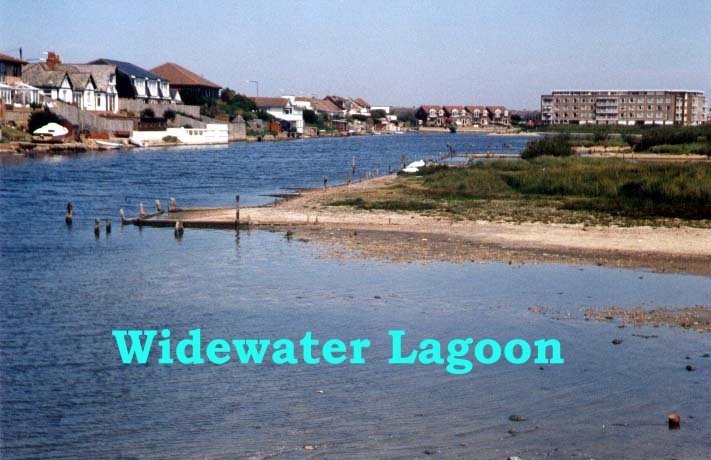
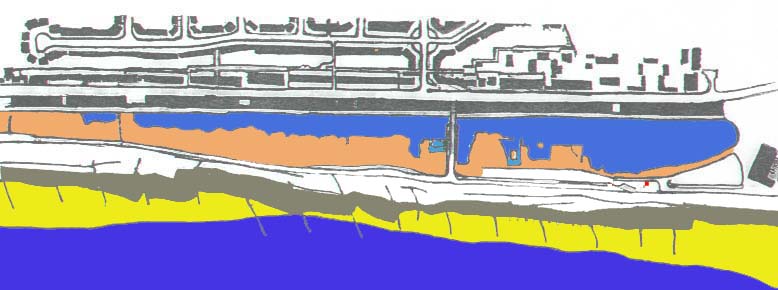







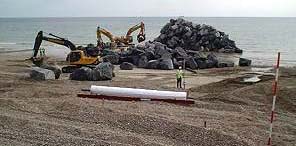






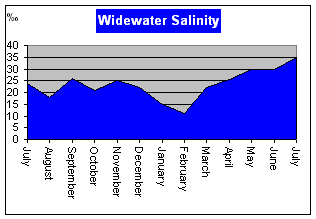






 26
February 2003
26
February 2003
